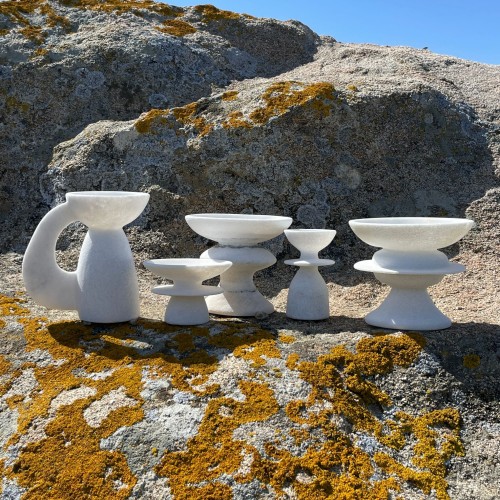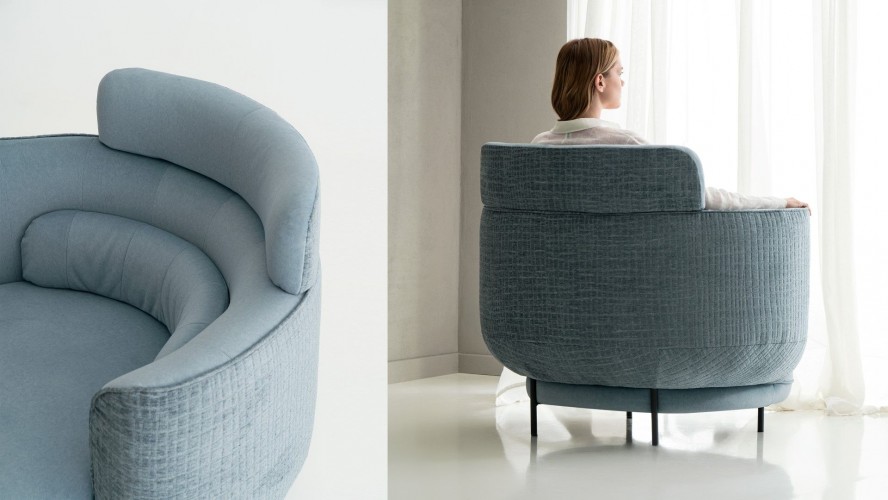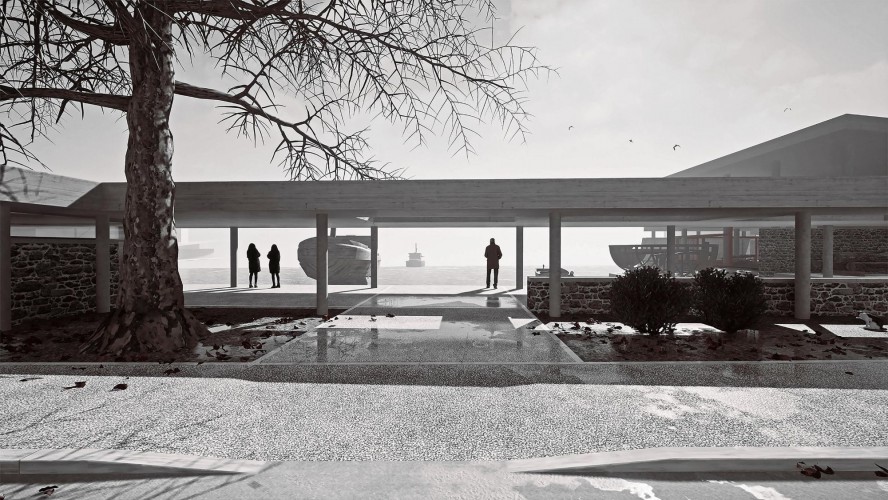Συνέντευξη: Hyperscapes Research Office (HRO)
DS.WRITER:
Sophia Throuvala
Κεντρική Εικόνα: Αρχείο HRO
Συναντήσαμε τους Hyperscapes Research Office, μια διακλαδική open-ended ομάδα δημιουργών, για να συζητήσουμε σύγχρονα ζητήματα που αφορούν την ερευνητική και κριτική προσέγγιση του χώρου στο design και την αρχιτεκτονική. Οι HRO ιδρύθηκαν το 2020, και εξ αρχής ασχολήθηκαν με την έρευνα σε δύσκολα θέματα όπως την οικολογία, το προσφυγικό και την πλανητική αστικοποίηση (planetary urbanization), καθώς και τη σχέση τους με την αρχιτεκτονική και τον αστικό σχεδιασμό. Τα μέλη της ομάδας αυτή τη στιγμή είναι οι: Konstantinos Venis, Filippo Albertini, Giada Zuan, Virginia Pozzi, Periklis Lazarou, Diogo Ferreira -ωστόσο το HRO δεν αποτελείται από συγκεκριμένο αριθμό μελών. Στα πλαίσια της δουλειάς τους, θίγεται το πολύ ενδιαφέρον ζήτημα της αμφισβήτησης των ορίων της αρχιτεκτονικής μέσα από το design. Η παράδοση, τα μέσα παραγωγής και η διαδικασία της ίδιας της αρχιτεκτονικής έρχονται ίσως σε αντιδιαστολή με το περιβάλλον στο οποίο ο δομημένος χώρος υπάρχει και χρησιμοποιείται. Πώς θα μπορούσαν να γίνουν κατανοητοί αυτοί οι τόποι, όχι μόνο από την αρχιτεκτονική που τους ορίζει αλλά και από τις ευρύτερες βιολογικές και κοινωνικοπολιτικές παραμέτρους που τους συντηρούν; Αυτά και ακόμα περισσότερα αποτέλεσαν τον πυρήνα της συζήτησής μας με τους HRO.
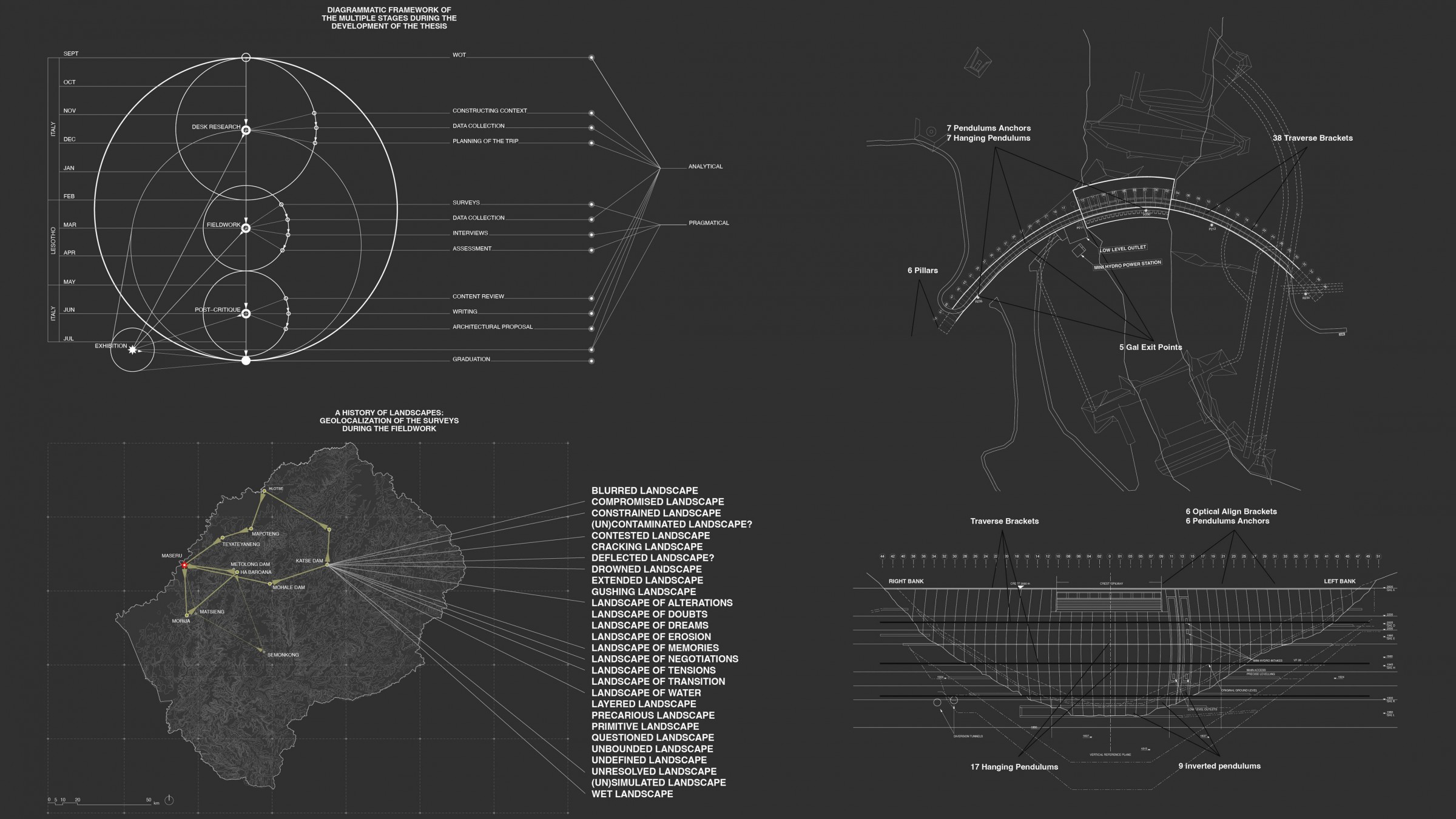
Design Research
Ποια η αξία της διεπιστημονικότητας στο σύγχρονο design και την αρχιτεκτονική; Μπορεί η πρακτική του σχεδιασμού να αγγίξει τα όρια του επιστημονικού πειράματος λόγω της συνεργασίας μεταξύ διαφορετικών επιστημονικών και δημιουργικών κλάδων;
Οι διεπιστημονικές προσεγγίσεις στο design και την αρχιτεκτονική σηματοδοτούν την ανάγκη για νέα παραδείγματα, νέους κλάδους και τεχνικές, και ανανεωμένο λεξιλόγιο. Οι διεπιστημονικές πρακτικές δεν είναι αυθαίρετες, αναπτύσσονται οργανικά από φυσικές τάσεις, κοινές σε παρακείμενες μορφές πρακτικής. Η διακλάδωση των συλλογικών πρακτικών μπορεί να οδηγήσει στην εμφάνιση νέων γνωσιολογικών μετατοπίσεων. Μέσω της αρχιτεκτονικής, του design, της κριτικής έρευνας, της συλλογής δεδομένων και της χαρτογραφίας, αναζητούμε στοιχεία για την ανάπτυξη εναλλακτικών μεθοδολογικών μηχανισμών, που εγείρουν επείγοντα ερωτήματα σχετικά με τα επιθυμητά μέλλοντα του πλανήτη. Αναπόσπαστο μέρος της διαδικασίας μας ήταν επίσης η ανοιχτή συνεργασία με επαγγελματίες και μελετητές, ακαδημαϊκούς και μη, από διάφορους τομείς όπως η αστική κοινωνιολογία, προγραμματιστές, διπλωμάτες, επιστήμονες του κλίματος, ακτιβιστές, αρχιτέκτονες και καλλιτέχνες. Αυτή η συλλογική προσπάθεια μας έδωσε τη δυνατότητα να προσεγγίσουμε σύνθετα ζητήματα, που δεν εμπίπτουν απαραίτητα στα κανονικά όρια της αρχιτεκτονικής πρακτικής και γνώσης, συγκεντρώνοντας συνεισφορές από διάφορους τομείς εμπειρίας και τεχνογνωσίας. Αυτές οι συνεργασίες αποτελούν βασικούς μοχλούς για την επέκταση της αρχιτεκτονικής και του σχεδιασμού.
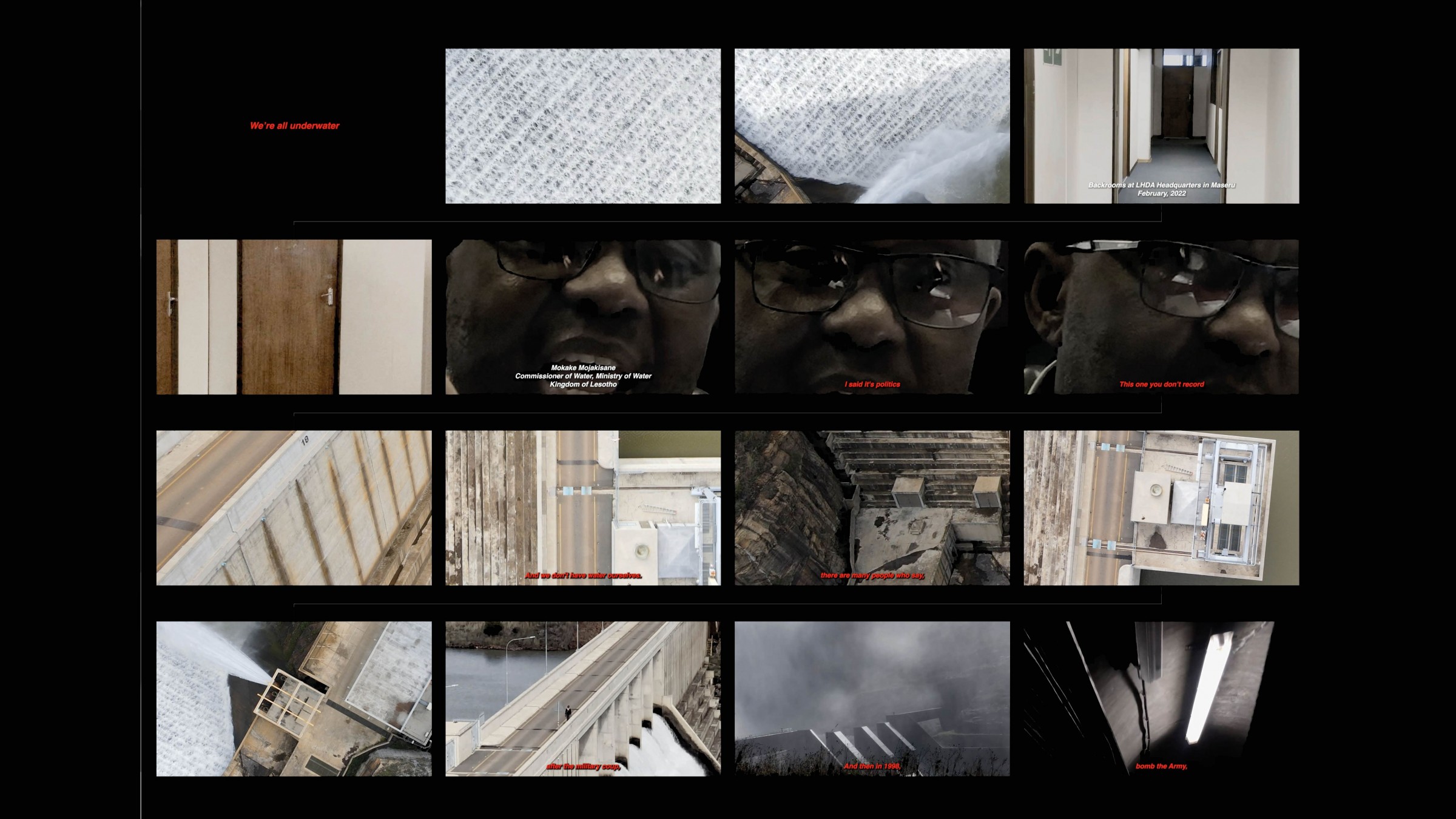
Documentary
Πώς προσεγγίζετε εσείς τη διεπιστημονικότητα;
Η άνιση κατανομή του πλούτου και της εξουσίας έχει ενθαρρύνει νέες μορφές βίας, οι οποίες επιταχύνονται επίσης από οικολογικές καταστροφές, εμπλεκόμενες με πανδημίες, αποτυχημένες συγκομιδές, την αυξανόμενη απειλή του οικοφασισμού και τα εκατομμύρια των προσφύγων που έρχονται. Σε χωρικό επίπεδο, το “αστικό” έχει εκραγεί, φτάνοντας σε μια πλανητική συνθήκη αστικοποίησης, χωρίς ιστορικό προηγούμενο να μας καθοδηγήσει για το πώς θα εξυπηρετηθεί ένας πλανήτης 10 δισεκατομμυρίων ανθρώπων, πυροδοτώντας έτσι πολλαπλές κρίσεις σε κοινωνικοπολιτικό και κλιματολογικό-οικολογικό επίπεδο, με εκτόξευση της μαζικής ανθρώπινης μετανάστευσης προς τα σύνορα και τις βιώσιμες κλιματικές ζώνες. Η κρίση τού σήμερα είναι επίσης μια κρίση του εαυτού, που έχει να κάνει με μια μετα-ανθρώπινη επανεννοιολόγηση. Αυτές οι πλανητικές διεργασίες είναι βαθιά αλληλένδετες και μπερδεμένες, αλλά και εντείνουν η μία την άλλη. Οι διεπιστημονικές πρακτικές είναι απαραίτητες για να πλαισιώσουν αυτά τα περίπλοκα σύγχρονα ζητήματα, αφού είναι σε θέση να τα προσδιορίσουν από πολλαπλές οπτικές γωνίες και να εντοπίσουν τους συσχετισμούς τους, αλλά επίσης ενθαρρύνουν την εύρεση μοναδικών εναλλακτικών λύσεων, που δίνονται από το μείγμα τεχνογνωσίας και μπορούν να βοηθήσουν στην ενδυνάμωση των αποστερημένων ανθρώπων, ενώ θέτουν και ερωτήματα περί ευθύνης.
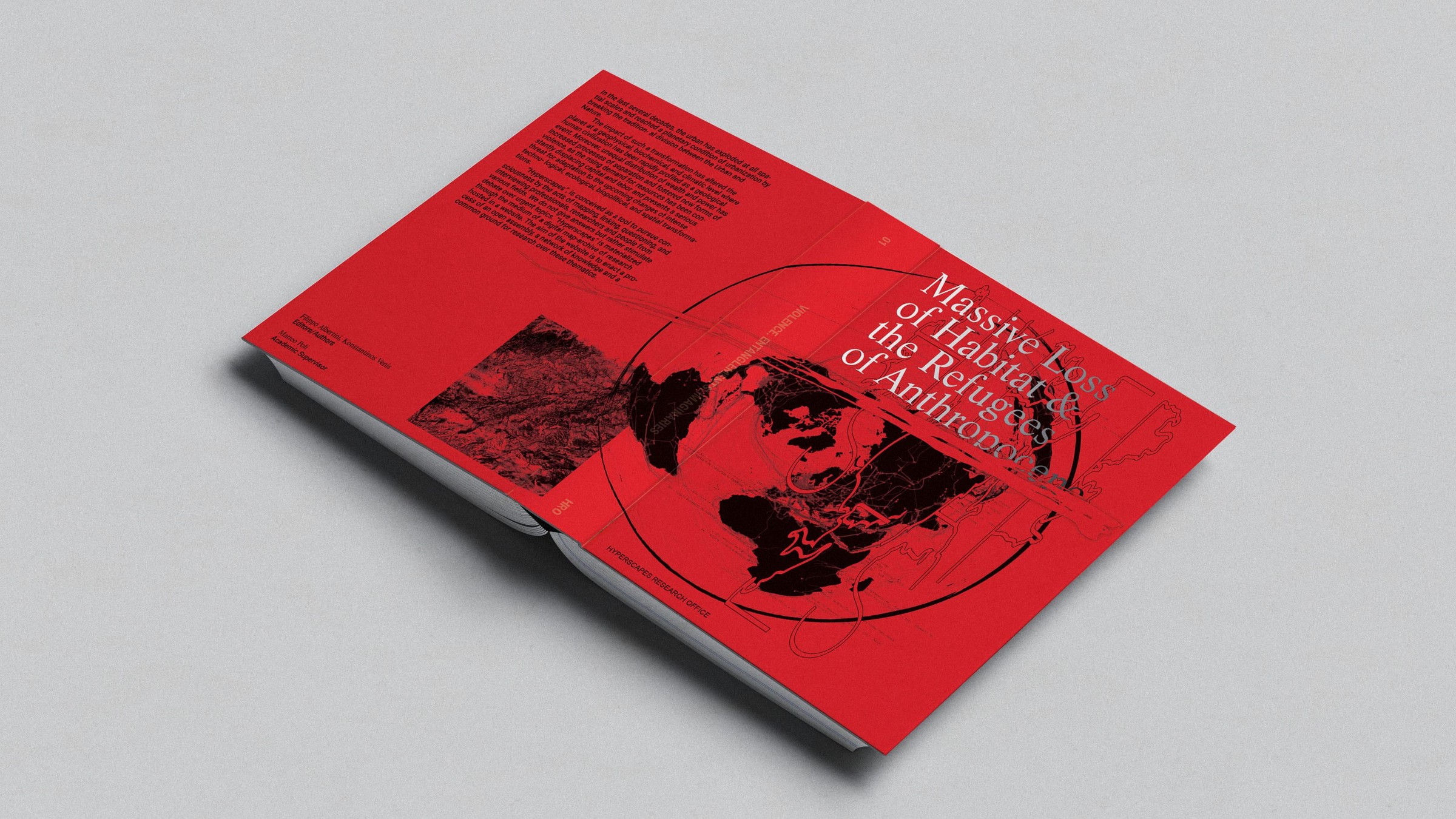
Προηγουμένως, αναφέρθηκε η έννοια της βίας. Πώς την εντάσσετε στη δουλειά σας, και ποια η σχέση της με την αρχιτεκτονική;
Το επιχείρημα είναι ότι υπάρχει μια εγγενής βία της αρχιτεκτονικής στα σώματα. Η “σκληρή” αρχιτεκτονική –όπως πόρτες, τοίχοι, διάδρομοι και φράχτες– δεν οργανώνει απλώς τα σώματα στον χώρο αλλά και τους επιβάλλεται, αφού δεν μπορούμε να περάσουμε μέσα από αυτά τα στοιχεία. Τα περισσότερα από τα τείχη που μας περιβάλλουν πραγματώνουν την ιδιωτική ιδιοκτησία. Δεν υλοποιούν απλώς έναν χώρο όπου η οργάνωση των σωμάτων λαμβάνει χώρα μέσα από μια γραμμή που χαράσσεται στο πάτωμα, αλλά και την πολιτική που διατρέχει αυτά. Αν και η ιδιωτική ιδιοκτησία δεν έχει εμφανιστεί μέσα στον καπιταλισμό, θα μπορούσαμε μάλλον να πούμε ότι ο καπιταλισμός έχει εφεύρει μια “υπερ-μορφή” ιδιωτικής ιδιοκτησίας που γνωρίζουμε ως σύνορα. Τα σύνορα ορίζουν τις οικονομίες, την ένταξη και τον αποκλεισμό, ορίζουν δικαιώματα, προνόμια και τη γεωπολιτική που τα συνοδεύει. Από αρχιτεκτονικής άποψης, τα σύνορα δεν είναι απλώς μια γραμμή που χωρίζει τη μια χώρα από την άλλη. Μέσα σε αυτό το έδαφος, ένα ολόκληρο σύστημα μηχανισμών υλοποιεί τα σύνορα. Τα αρχιτεκτονικά στοιχεία και η παραγωγή υποδομών μπορούν να λειτουργήσουν ως οικολογική νομιμοποίηση για την εμφύτευση εργαλείων ασφαλείας σε παραμεθόριες ζώνες, για την εκκένωση των αγροτικών εκτάσεων από τους κατοίκους τους, που οδηγεί στον εκτοπισμό της αγροτικής οικονομίας και των αυτόχθονων κοινοτήτων. Για παράδειγμα, τα στρατιωτικοποιημένα φράγματα στη νοτιοανατολική Τουρκία επιβάλλουν ένα καμουφλαρισμένο σύνορο μεταξύ Τουρκίας και Συρίας, το οποίο αντιπροσωπεύει επίσης ένα δίκτυο οπλισμένων υποδομών. Επομένως, αναρωτιόμαστε: είναι η βία πάντα εγγενής στην αρχιτεκτονική; Μέσα από τη δουλειά μας, διερευνούμε τα χωρικά και φυσικά χαρακτηριστικά της βίας και πώς αυτά συνδέονται με τις ανθρώπινες εξωτερικές επιδράσεις.
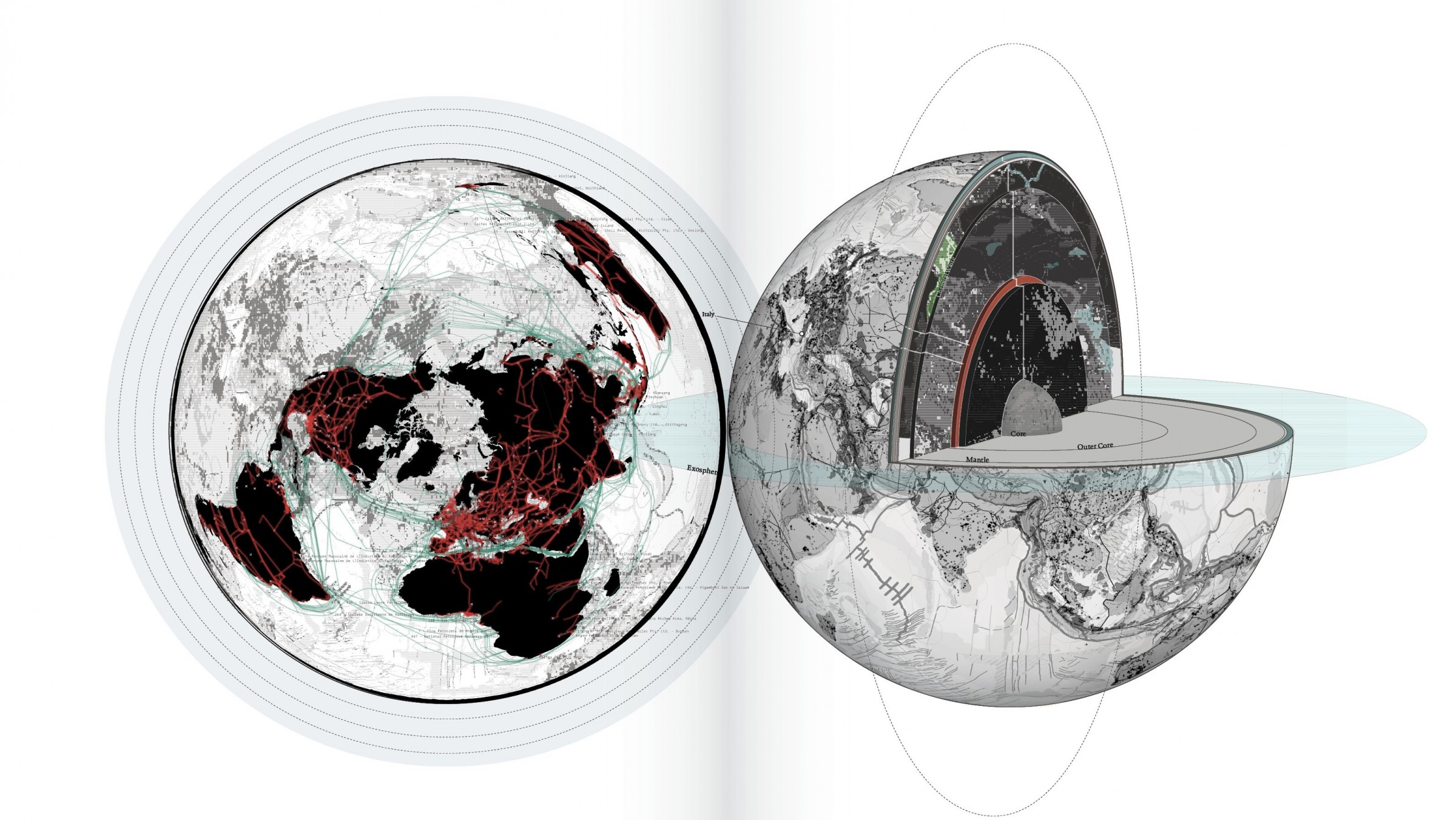
Planetary forces
Με αφορμή το πρότζεκτ σας “The Archipelago of Hyperscapes”, θα θέλαμε να μας πείτε πώς προσεγγίζετε την έννοια του αρχείου, μια έννοια που απασχολεί πολλούς σύγχρονους δημιουργούς και ερευνητές.
Τα αρχεία είναι μια λειτουργία της γνώσης, ένα εργαλείο οργάνωσης πληροφοριών: αποτελούν την πρώτη ύλη της μνήμης. Η αρχιτεκτονική του αρχείου επιτρέπει την εξερεύνησή του και δίνει την ελευθερία πραγματοποίησης νέων συνειρμών. Το αρχείο μπορεί να είναι ένα ισχυρό εργαλείο ανάλογα με την προσβασιμότητά του. Το “The Archipelago of Hyperscapes” είναι το εργαλείο σχεδιασμού ιστοσελίδων που σχετίζεται με τη δουλειά μας και υπονοεί τη λογική του αρχείου με ανοιχτό τρόπο. Το αποτέλεσμα είναι μια πλατφόρμα όπου είναι δυνατή η προβολή υλικών και ο πειραματισμός με ένα συνεχώς αυξανόμενο σύνολο πληροφοριών, με την ερώτηση ποιος θα έχει πρόσβαση σε αυτό και ποιες πιθανές αλληλεπιδράσεις μπορούν να δημιουργηθούν. Το αρχείο μπορεί να είναι ένα ενεργό εργαλείο για τη συλλογικοποίηση διαδικασιών και για εικασίες σχετικά με εναλλακτικές φαντασιώσεις, την ανταλλαγή και την εξερεύνηση νέων ερευνητικών νημάτων, τη συλλογή υλικού και τη δημιουργία ανοιχτών συζητήσεων.
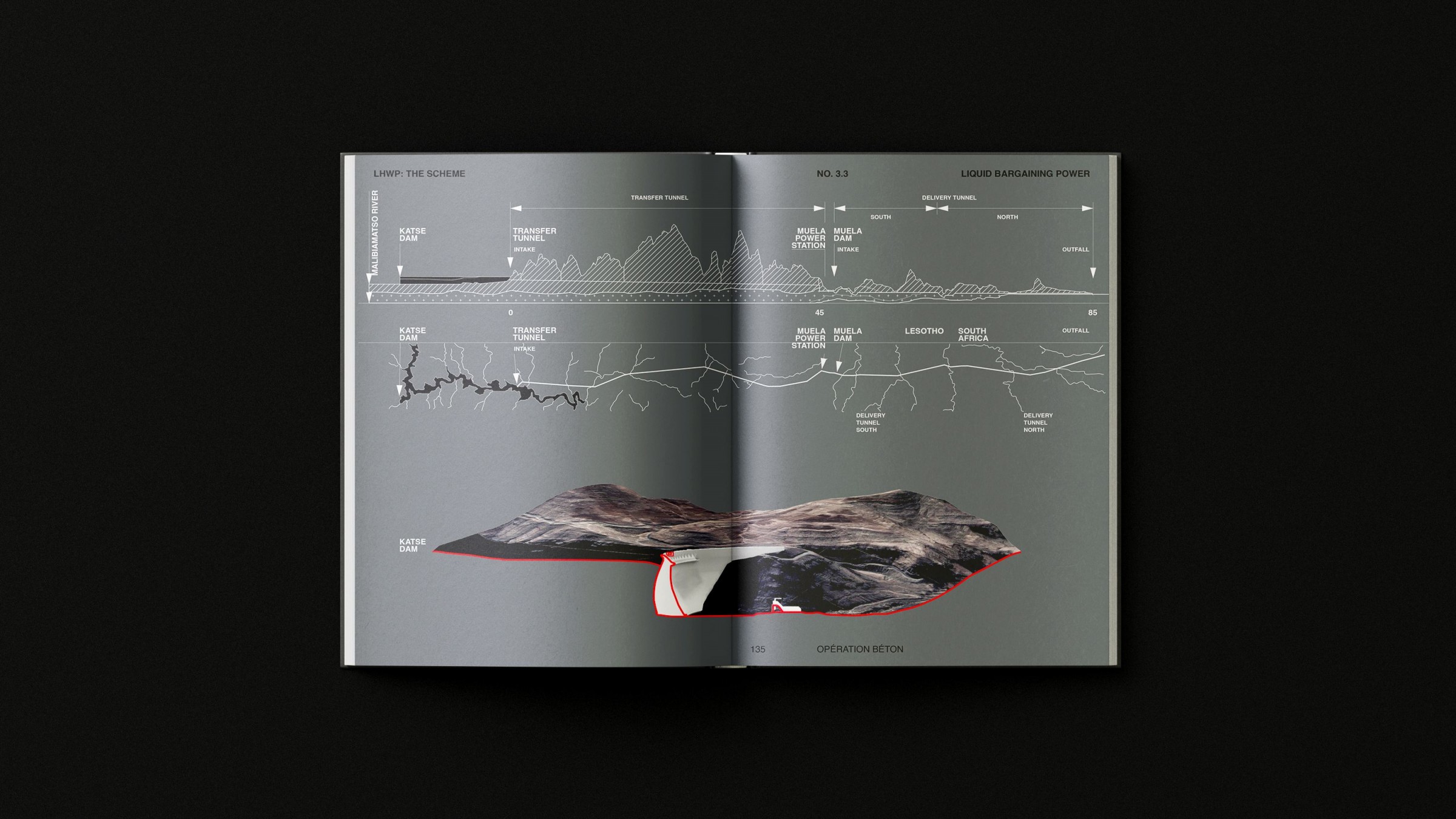
Violence
Τα αρχεία κατοικούν στο παρόν και συγχωνεύουν το παρελθόν και το μέλλον των ειδών, των ζώων, των μηχανών και των ανθρώπων. Το “Hyperscapes” αφορά την εξερεύνηση αυτών των φαντασιακών με την εμφάνιση ενός συγκεκριμένου συνόλου δεδομένων -τα οποία συλλέγονται και δημιουργούνται μέσω της έρευνας και του σχεδιασμού μας. Η τοπογραφία που προκύπτει είναι ένα τοπίο που αποτελείται από έγγραφα, εικόνες, χώρους, αντικείμενα, χάρτες, βίντεο και φύλλα δεδομένων.
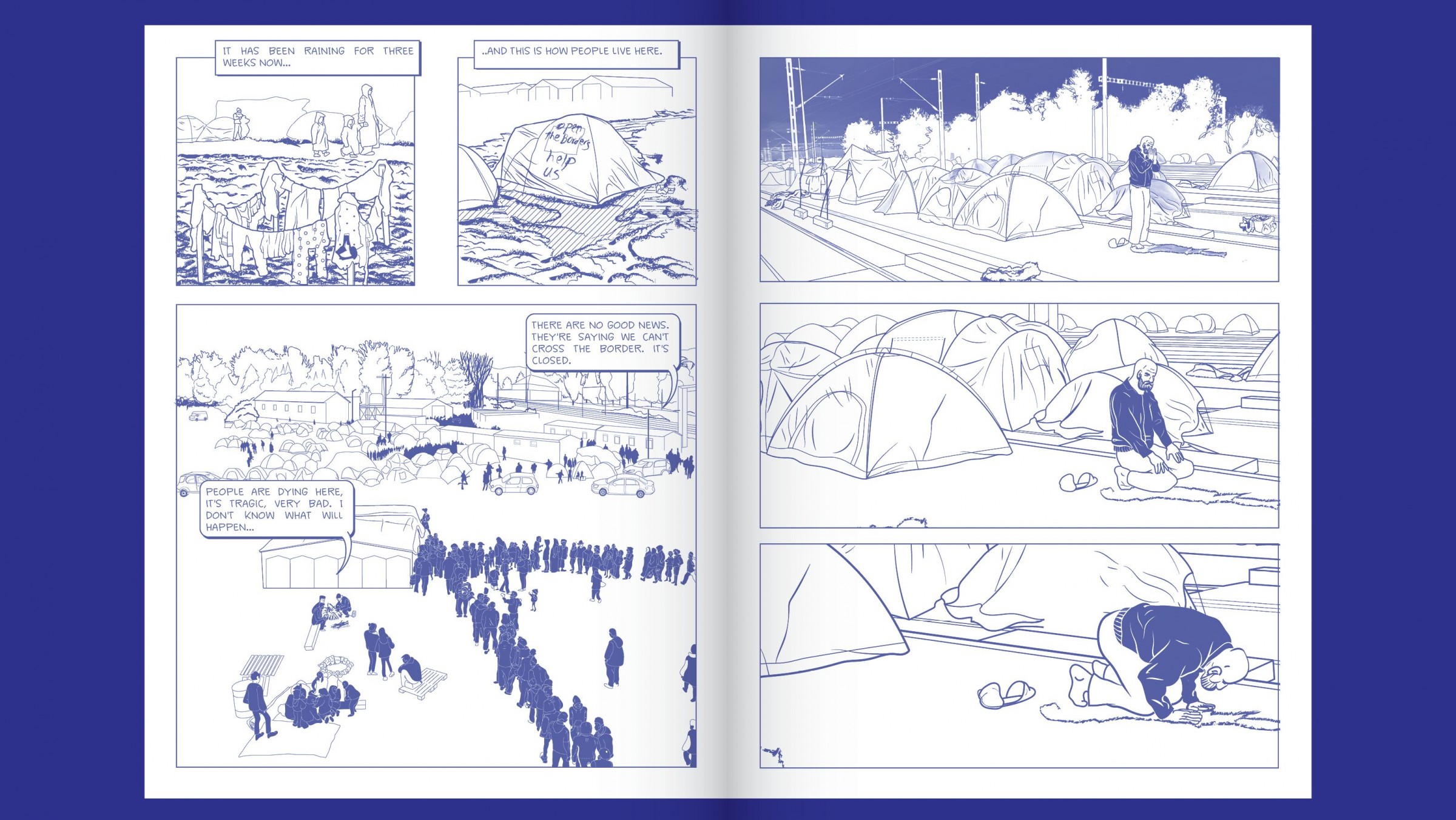
Narratives
Χρειάζεται ένας επαναπροσδιορισμός της αρχιτεκτονικής και σχεδιαστικής “παράδοσης”, όταν η Γη αλλάζει και αποκλίνει από το γνώριμο; Ποιος ο ρόλος του designer, του αρχιτέκτονα, του καλλιτέχνη στην προσέγγιση ενός μέλλοντος διαφορετικού;
Πιστεύουμε ότι ένας επαναπροσδιορισμός της πρακτικής μας είναι όντως απαραίτητος, και το επάγγελμά μας δοκιμάζει τα όρια που θέλει να περάσει, προωθώντας την κριτική σκέψη και τις εναλλακτικές προσεγγίσεις. Το πεδίο γνώσης της αρχιτεκτονικής και του σχεδιασμού δεν ορίζεται όπως στις προηγούμενες δεκαετίες. Δεν εγκαταλείπουμε την ιδιαιτερότητα αυτής της πρακτικής και την ιδιαιτερότητα αυτής της γνώσης, αλλά την ενσωματώνουμε σε αυτή τη διαδικασία. Μπορούμε να συμπεριλάβουμε τους αρχιτέκτονες και τους σχεδιαστές μεταξύ των πολιτιστικών εργαζομένων που, μέσω της πολιτιστικής πρακτικής, χρησιμοποιούν τα εργαλεία και τις γνώσεις τους για να υποστηρίξουν τις αφηγήσεις εκείνων που περιθωριοποιούνται και στερούνται ιδιοκτησίας; Πιστεύουμε ότι η αρχιτεκτονική γνώση και πρακτική μπορεί να συμβάλει σε αυτό. Στόχος μας είναι να κινητοποιήσουμε τις γνώσεις, τις εμπειρίες και τις δεξιότητές μας, να υποστηρίξουμε κινήματα για την κατανόηση του χώρου, και του τρόπου με τον οποίο αυτός εμπλέκεται σε κοινωνικούς οργανισμούς, και επίσης να ενδυναμώσουμε τους τελευταίους δίνοντάς τους τα εργαλεία για να αναπτύξουν τις δικές τους απόψεις. Μαζί, θέλουμε να υποστηρίξουμε την ιδέα ότι είναι απαραίτητο να ξανασκεφτούμε πώς η αρχιτεκτονική και το σχέδιο διαμορφώνουν τον κόσμο μας αλλά και την ευθύνη τους απέναντι στην κοινωνία.
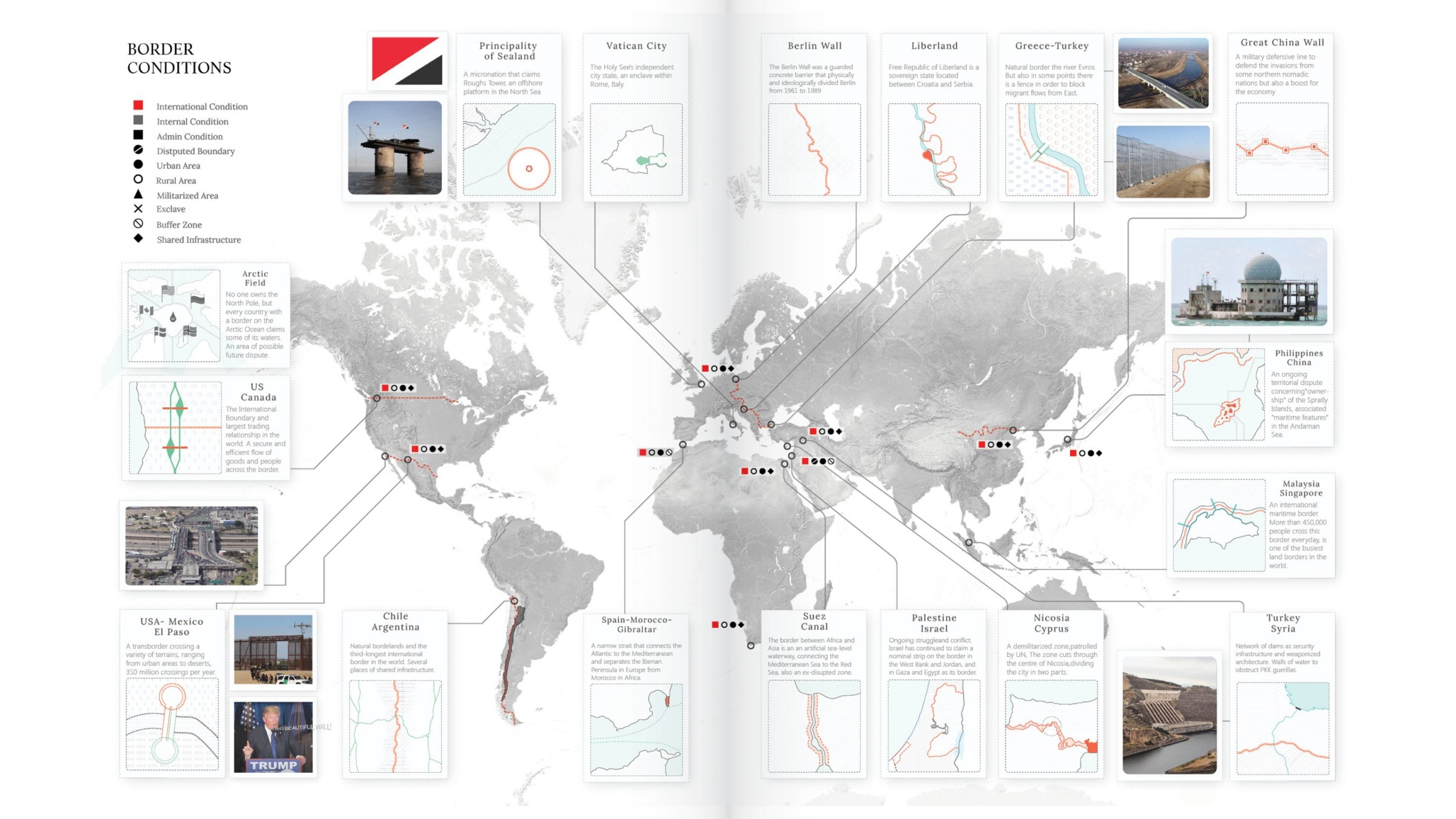




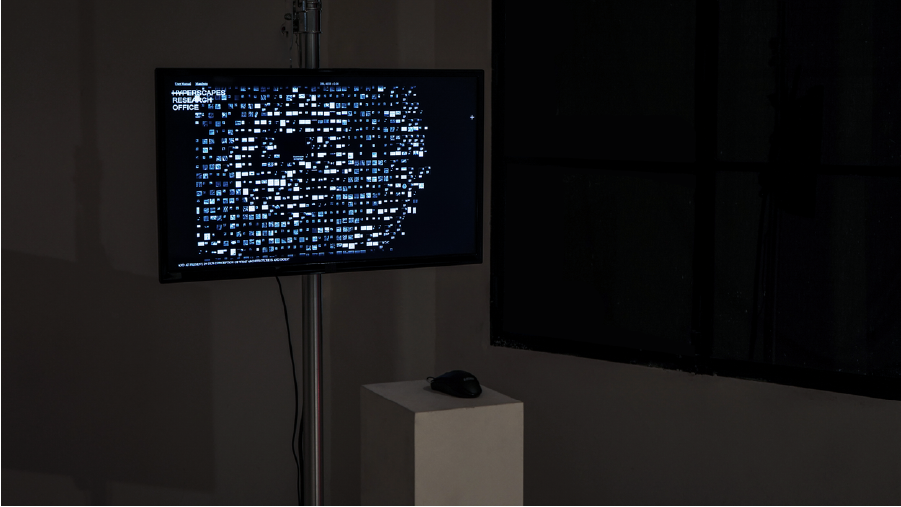
.jpg)
